The Red Tree is a touching book with a message of hope that can provide almost endless opportunities for talking and writing
The Red Tree by Shaun Tan is an absolutely stunning and powerful book for upper KS2. Mostly told through the beautiful and strange illustrations and one long poetic sentence that continues through the text, it conveys the complexity of emotions and thoughts one can experience on a day that feels hopeless, but which ends with a message of hope in the red tree of the title. Personal responses, extraction of main ideas and development of imagery, symbolism and vocabulary are key reading skills to focus on with this text, but it is also ideal for a thematic project linking PSHCE, art, music and ICT and offers up endless opportunities for talking and writing.
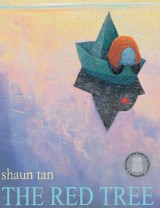 One of the key messages of this book is that there is always hope of happiness, although we may not always be able to see it. There is a reminder of this in the red leaf found on every page, hidden away from the character’s sight but seen by the reader if you look carefully. As this is a text that may evoke personal responses, it’s a good idea to establish some ground rules before you begin and it’s not a book to use until you know your class. A simple but very effective way to start is to bring in an object which symbolises hope to you and recount orally a story of a journey from lack of hope to renewed faith in the world. It doesn’t have to be a red leaf – especially if it’s not Autumn and you are not the flower-pressing type – but it does have to be something which will inspire you to ‘weave’ a story around it. Helping the children to understand that we all have difficult days is a valuable part of learning. Ask the children to think about, and bring in if they wish, objects or images that make them feel better when days are difficult and share their responses if they want to.
One of the key messages of this book is that there is always hope of happiness, although we may not always be able to see it. There is a reminder of this in the red leaf found on every page, hidden away from the character’s sight but seen by the reader if you look carefully. As this is a text that may evoke personal responses, it’s a good idea to establish some ground rules before you begin and it’s not a book to use until you know your class. A simple but very effective way to start is to bring in an object which symbolises hope to you and recount orally a story of a journey from lack of hope to renewed faith in the world. It doesn’t have to be a red leaf – especially if it’s not Autumn and you are not the flower-pressing type – but it does have to be something which will inspire you to ‘weave’ a story around it. Helping the children to understand that we all have difficult days is a valuable part of learning. Ask the children to think about, and bring in if they wish, objects or images that make them feel better when days are difficult and share their responses if they want to.
Routes to take…
• Read the whole text using a text visualiser to amplify the images on your IWB.
• Return to each page using Aidan Chambers’ Tell Me (aidanchambers.co.uk/tellme) approach to explore thoughts, feelings, likes, dislikes, memories and questions. Slow the pace of the lesson down here so that you have enough time to explore and develop the children’s thinking.
• Focus on selected images first: choose some of the images to xamine in detail and explore thoughts and ideas.
• Philosophy for children: this text is perfect to use as stimulus for a P4C session, as it allows for individual interpretation and provides so many interesting layers of meaning. The philosophical questions a group of Y5 children formulated for discussion included: Is the Red Tree happiness? Does the girl believe that it will really be OK in the end? Why do we sometimeshave to wait for a long time for things to get better? Is hope like praying? The Sapere website (sapere.org.uk) is a good place to start if you would like to find out more about philosophy for children.
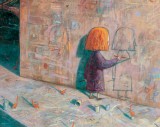 Another route to take, following an initial exploration of the text, is to use ‘ideas writing’ or ‘i-writing’. Steve Williams suggests this as a method of helping children to ‘think with a pen in their hands’. Introduce an i-writing book which can be used in any curriculum area. Children use these not as jotters, but as a valued place to record their thinking in diagrammatic and written form, which can then lead into whole class dialogue.
Another route to take, following an initial exploration of the text, is to use ‘ideas writing’ or ‘i-writing’. Steve Williams suggests this as a method of helping children to ‘think with a pen in their hands’. Introduce an i-writing book which can be used in any curriculum area. Children use these not as jotters, but as a valued place to record their thinking in diagrammatic and written form, which can then lead into whole class dialogue.
An interesting i-writing theme to use for The Red Tree would be ‘What makes a perfect day?’ and / or ‘What makes an imperfect day?’ Movement between the triangle of talking, writing and thinking has endless possibilities but here’s one possible sequence:
• Think: (individual) give the children time to think about and record their ideas diagrammatically - e.g. spidergram, bullets, chart etc. - in their i-writing books.
• Talk: (paired or small group then move into whole group discussion). The children use their i-writing to support their dialogue – hearing each other’s views and allowing these to impact on their own thoughts.
• Think: (individual) children return to their own diagram, adjusting it if they wish.
• Talk: (whole group) children share any ways in which they have changed their thinking.
• Write: (individual) children use their i-writing to do some e-writing or ‘expression writing’, a fuller piece of writing that works best if it is for an audience. Ask the children to write a paragraph as part of an assembly performance entitled, ‘It’s such a perfect day…’
You could write one yourself, and use Lou Reed’s fabulous song too!
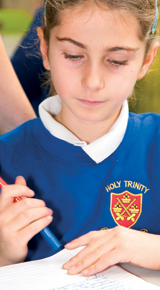 Other i-writing ideas for the red tree:
Other i-writing ideas for the red tree:
• Free writing: following the initial reading of the text, children write for two minutes without stopping. They can write about their thoughts, feelings, memories, etc.
• What if…? (e.g. there was no unhappiness in the world)
• What does the red tree mean to you? (Word / image storm)
• Thread Discussion Board (thanks to Andy Gaunt for this great idea!). Set up a permanent laminated display board in the classroom that can be wiped clean. Write a statement or question on the board that requires either agreement or disagreement but also requires an explanation, e.g. ‘Can we be happy all of the time?’ ‘All days are bad days.’ The children write their answer / tick ‘yes’ or ‘no’ on the board, then write their reason why they think so. At the end of the week, this provides an excellent opportunity for whole class discussion.
A fabulous final outcome would be the writing of a complete poem which could be easily linked to an art/ICT project. Try the following activities to lead into the final outcome:
• Use drama techniques such as freeze frame, mime and speech bubbles to explore the meanings of lines of text.
• Examine the colours and images then draw alternative images to express each line of text.
• How else…? Explore alternative phrases for each page, e.g. ‘darkness overcomes you’ – how else can we say it?
• Write a short poem based on the line ‘the world is a deaf machine’ with each line starting ‘The world is….’
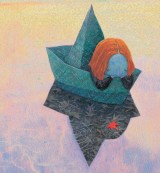 Link the writing of poetry to the creation of an A3 book based on the children’s own artwork. The children can study the use of different media in The Red Tree and other books by Shaun Tan, such as The Lost Thing. Provide opportunities for children to investigate how artists use collage, paint, found objects, digital photography and sculpture to create powerful images. Each page of the book depicts a different geographical landscape, some constructed and others natural. Give the children time to explore different landscapes through visits, film, photographs and images and consider what makes a particular landscape seem hostile or friendly, then ask them to choose ones which might best convey the feelings expressed in their poems. Provide a range of different materials and allow the children to explore techniques before constructing pages for their own book.
Link the writing of poetry to the creation of an A3 book based on the children’s own artwork. The children can study the use of different media in The Red Tree and other books by Shaun Tan, such as The Lost Thing. Provide opportunities for children to investigate how artists use collage, paint, found objects, digital photography and sculpture to create powerful images. Each page of the book depicts a different geographical landscape, some constructed and others natural. Give the children time to explore different landscapes through visits, film, photographs and images and consider what makes a particular landscape seem hostile or friendly, then ask them to choose ones which might best convey the feelings expressed in their poems. Provide a range of different materials and allow the children to explore techniques before constructing pages for their own book.
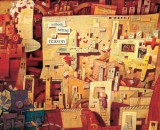 Instead of the A3 book, or as well as if you are feeling adventurous, the children could create a multi-modal text, using digital software and incorporating images, text, sound and music. Simply selecting and adding images to accompany lines of text using PowerPoint can be very effective and choosing music to accompany the reading of a paper text would contribute to the final impact. Watching short films where sound, music and moving image combine as a ‘text’ will support children’s learning, but if you have become a Shaun Tan fan by this time, then his DVD The Lost Thing would be worth buying as a resource. Allow children to storyboard their books – either digitally or on paper and present their ideas to each other for feedback.
Instead of the A3 book, or as well as if you are feeling adventurous, the children could create a multi-modal text, using digital software and incorporating images, text, sound and music. Simply selecting and adding images to accompany lines of text using PowerPoint can be very effective and choosing music to accompany the reading of a paper text would contribute to the final impact. Watching short films where sound, music and moving image combine as a ‘text’ will support children’s learning, but if you have become a Shaun Tan fan by this time, then his DVD The Lost Thing would be worth buying as a resource. Allow children to storyboard their books – either digitally or on paper and present their ideas to each other for feedback.
Create a prestigious annual prize for the best book created. You could call it the ‘Book of Hope’ award and organise an awards ceremony evening, with a panel of judges to decide on the winners - including a local artist and poet if possible. Depending on time and resources you could have two categories – the A3 paper version and a multi-modal version. The children could read their texts with backdrops of art work, plus sound, music and lighting for a really exciting and professional event. Establishing this as an annual prize brings value to reading, writing, art, and poetry.
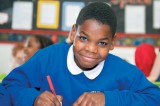 A totally different but extremely valuable outcome for this book would be to use it to support the establishment of a buddying or listening service in your school. As the text deals with issues such as isolation, loneliness, finding your place in the world, being listened to etc, the children could be asked to problem solve what to do if they or someone else was feeling any of those emotions. Following such a discussion you could suggest, if they didn’t come up with it, writing an argument for establishing a listening service and taking it to the school council and school governors. This presentation could start with the children reading their books. The Red Tree by Shaun Tan is published by Lothian Books, an imprint of Hachette Children’s Books.
A totally different but extremely valuable outcome for this book would be to use it to support the establishment of a buddying or listening service in your school. As the text deals with issues such as isolation, loneliness, finding your place in the world, being listened to etc, the children could be asked to problem solve what to do if they or someone else was feeling any of those emotions. Following such a discussion you could suggest, if they didn’t come up with it, writing an argument for establishing a listening service and taking it to the school council and school governors. This presentation could start with the children reading their books. The Red Tree by Shaun Tan is published by Lothian Books, an imprint of Hachette Children’s Books.
• Other titles by Shaun Tan: The Lost Thing / Eric / Tales from Outer Suburbia / The Haunted Playground
• Sadako and the Thousand Paper Cranes : true story of a Japanese girl who died as a result of the Hiroshima bombing but who became a symbol for peace by attempting to fold 1,000 paper cranes as a way of gaining a wish from the gods. Exploring the image of the crane and what it came to symbolise could link very well into The Red Tree.
Carol Satterthwaite is an independent literacy consultant and a former Senior Literacy Consultant for the Primary National Strategy. She designs and leads communication, language and literacy projects with networks of schools and for local authorities.
How to use modelling to engage pupils with autism
Ace-Art-And-Design
Teaching Mandarin via video conference
Languages
